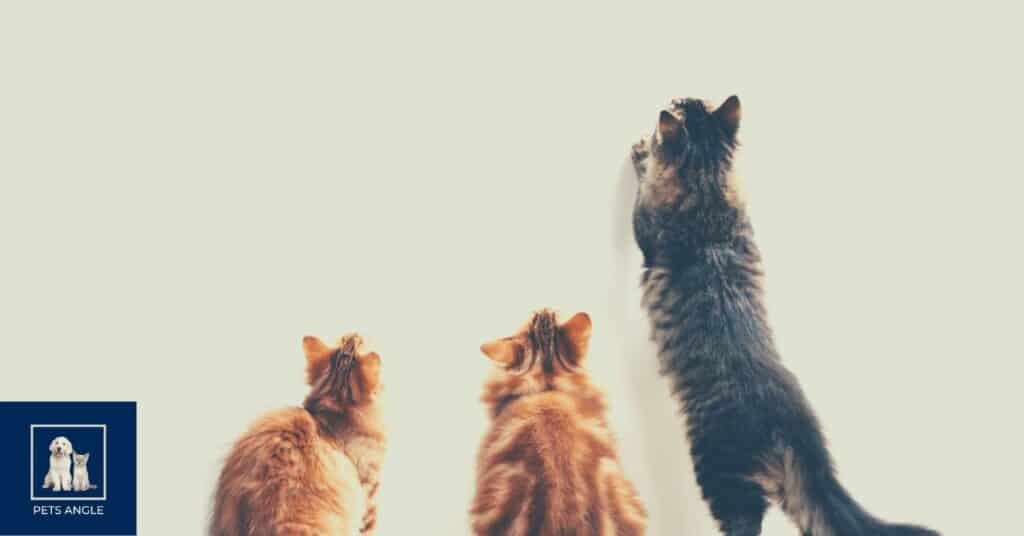Cats are one of the most dependable pet mates. However, it is essential to note that several of these pet types can be pretty challenging to keep as domestic pets in your home.
In your quest for an unusual pet that is also inexpensive to obtain, keep in mind that not all cat breeds are affectionate and non-dangerous.
Ensure you ask safety, health, and maintenance-related questions before buying any pet.
a. Caracal: The caracal might be a tamed wild cat; it still has its lineage traced to servals, steppe lynx, and wildcats.
Caracal kittens are fun and cuddly when they are young, but as they grow older, they become actual predators that are 800% bigger than a regular cat.
These cats can be a significant threat to humans if they are not socialized and trained correctly from an early age.
The unusual hisses and irregular ear movement of the Caracal kittens keep humans in the dark because those signs are yet to be assigned meanings.
It’s also worth noting that caracals are not only gregarious but also highly active, and their presence can be dangerous.
b. Ocelot: Like all exotic cats, the ocelot requires special care and poses a risk to its owner. It has powerful jaws and can chew on nearly anything, with a bite force comparable to a pit bull. The ocelot is hazardous to people if it is not socialized.
When attacking prey in the wild, these cats target the victim’s softest spots. The armpits and neck are the most vulnerable areas in humans to ocelot teeth.
This breed should be spayed within 90-150 days to prevent undesired population growth. Spaying it will also save the owner a strong odor of territorial marking.
They require a lot of space because they are enormous cats, but keeping them outside is dangerous.
Recommended space provision for the cat is a minimum area of 15 square meters and a height of more than two meters. Also, ensure it is an open enclosure. Waterbody should be in place because Ocelots enjoy swimming a lot.
The best way to tame an ocelot is to separate the kitten from its mother very early before the kitten opens its eyes. Late weaning will make the domestication process difficult.
Besides, do not buy Ocelot kittens in zoos except in nursing homes where the cats interphase with humans regularly.
Do not keep ocelots in a home with small children for safety concerns.
c. Chausie: The Chausie cat is a wild domestic cat of Central Asia origin and approximate size.
Its jumping exploit is second to none, while its long ears and tails consistently demonstrate its sensitivity to the environment. It is not advisable to leave it lonely for too long because it enjoys a companionable life.
It is also good to have another pet animal to keep company of Chausie. I assure you they will get along easily and become friends quickly. The other pet can even be dogs.
One major challenge with Chausie is its space requirement, as it likes exploration.
They get along well with dogs, by the way.
d. Bengal: Bengal cats are charming, humorous, and wise. It is a breed full of activities, and it demands additional attentiveness and care.
Improper handling may revert the cat to its inherent wildness.
The training should address socialization with humans to curtail their innate violent tendency. Bengal cats exhibit their territoriality with their odor around the premises.
e. Bobcat (Red Lynx): This extra-hairy cat easily adapts to feral and domestic lifestyles. Despite its domestication, occasional display of its wildness is always too volatile as it even can injure an adult. It is therefore not thinkable to keep bobcats with children. Bobcats get so irrational at times that it even charges visitors.
Besides their high price, Bobcats can be a bit expensive to maintain as their daily meat consumption is on the high side of up to 1.5 kg. It gets so irrational that it rips some household items like furniture and living room decorations.
I guess the beautiful look that endears its admirers as it comes in various colors.
f. Pixie Bob: shares some resemblance with a bobcat but is much smaller and safer than the bobcat. It can be very playful with the owner but not accommodating with strangers.
Pixiebobs come in long hair and short hair varieties and sizes.
As much as Pixie bob responds to instructions, humans rarely understand its emotions. This breed communicates with growls often to express anger and hostility. It is, therefore, essential to understand its feeling to avoid communication breakdown.
g. Singapura cat: The Singapura cat is quite different from other controversial breeds due to its calm demeanor.
It shies a lot and flows along with the owner’s disposition
Singapura requires a lot of training and care from its master.
Singapura is so timid and temperamental that it quickly goes into hiding if the owner yells at it.

